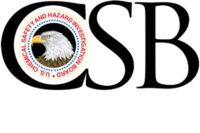Sad but true. In 2020, OSHA celebrates its 50th anniversary. Safety’s sage, Dan Petersen, published “Safety Management, a Human Approach” in 1975. Lessons haven’t been learned.
Deep investigations and voluminous reports are on the shelves on inferior safety cultures leading to NASA’s Challenger and Columbia space shuttle catastrophes; the BP Deepwater Horizon blowout; the 1989 Phillips chemical complex fire and explosion that killed 23 and injured 314; the 2005 Texas City refinery explosion killing 15 and injuring 170; the 2008 Imperial Sugar refinery explosion killing 13 and injuring 42; the 2013 West Fertilizer plant explosion killing 15, injuring 150, and damaging or destroying 160 buildings; and most recently media attacks on the safety practices of Boeing, Amazon and Tesla, among others.
Deja vu all over again
Why in the safety world does tragic history continually repeat itself?
ISHN interviews with a diverse group of safety subject matter experts point to these factors:
- Many senior leaders perceive safety as burdensome requirements that should be handled and kept off them by safety leaders. They pay safety leaders so they don’t have to think about safety.
- Safety is a function separate, it’s added on, there’s a specialist to do that, it’s a matter of compliance. Leaders don’t accept how safety is a broad picture of how we lead. Safety is embedded in everything.
- A lot of business leaders talk about safety. It’s on their mind. Many managers at all levels in all countries are absolutely dedicated to safety. But they have misguided thinking about what safety is and how to achieve it.
- Safety can be intimidating. The compliance component. The technical nature can be a challenge. Leaders probably haven’t thought much about risk tolerance. There’s such a massive amount of workforce exposure risks, it’s intimidating. So many things can go wrong it’s overwhelming. So leaders delegate safety or keep their fingers crossed.
- Site managers are all about the numbers – making their daily, weekly, monthly, quarterly, annual quotas. That’s their stress point, their pain point. Too many site managers still believe safety is a drag, a drag on productivity and profits. They don’t understand how accidents affect productivity, quality and reputations.
- The mindset too often is shove safety accountability to the safety person and/or the safety department.
- Leaders need to know the safety professional is a consultant, teacher, conscience. The safety leader is the executive. Too many executives believe that the safety professional is the safety leader of their organization.
- Too many safety pros are in a quandary: how to work for an organization that has no regard for ethics, the law, and their own money being spent on prevention.
- These organizations will invariably end up selling out safety pros at some point for failures the safety pro was trying to prevent.
- One refinery has put “Mission Zero” in its strategic plan, but it is stove-piped into the safety department. By doing this, leaders pass up the chance to define the “safety reality” in their organization.
Solving an age-old problem
OK, enough of the doom and gloom. What can be done about this disconnect between many senior business leaders and safety and health realities? About corporate-level complacency or denial. “It can’t happen here.” Lack of accountability. Or old-fashioned fatalism: “What can I do? Accidents will happen.”
Here’s advice from the safety and health experts we interviewed:
- If leaders don’t know safety performance is deviating, they are living in a deluded world. If it’s all good news, managers should be worried. The board needs to ask the right questions.
- Two factors put safety on the priorities list: severe incidents and direct pressure from the board of directors or other senior leaders who do understand the value of safety and/or do not wish to continue paying for the preventable costs of incidents.
- Help leaders gauge the fully loaded financial impact of accidents. This is sensitive work. The dollar cost doesn’t have to be instead of the human cost of accidents. This is a false dichomity. Both are potent.
- Senior leaders must be educated and come to believe if they get safety right, quality improves, production meets or exceeds targets, morale improves, injuries and absenteeism are reduced, sales grow and profits increase.
- Safety is usually seen as a cost function. Instead, leaders could reshape safety as a growth function. Companies have created safety programs that are competitive advantages. A mining construction company is building an innovative construction safety program. If it’s effective, their clients will pick them over other companies that they would have to spend money on oversight of an inferior program.
- Some leaders have an “aha moment” when they are helped to think in terms of the cost of avoidable incidents. One company identified a conservatively estimated cost saving in excess of $600,000 in the first year after it implemented a streamline safety process.
— Dave Johnson, ISHN Editor,
|
It comes down to this… Best practices for making clear safety and health expectations and holding facility-level managers accountable for meeting those expectations and goals:
|




